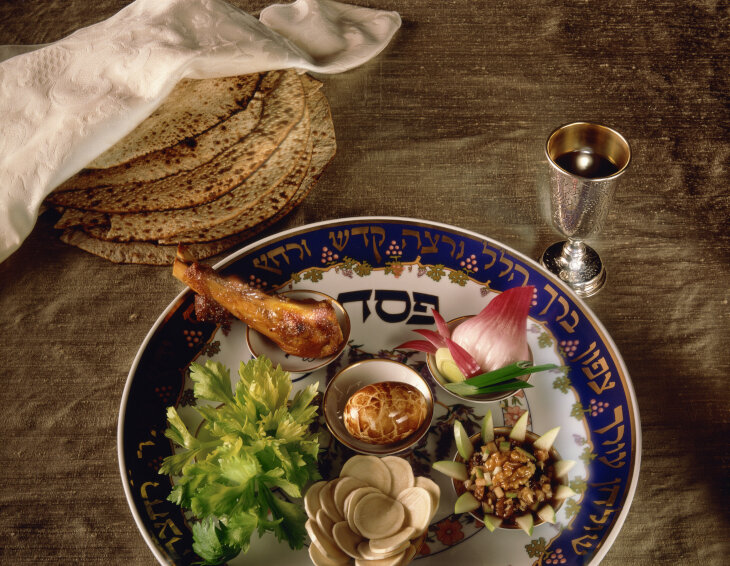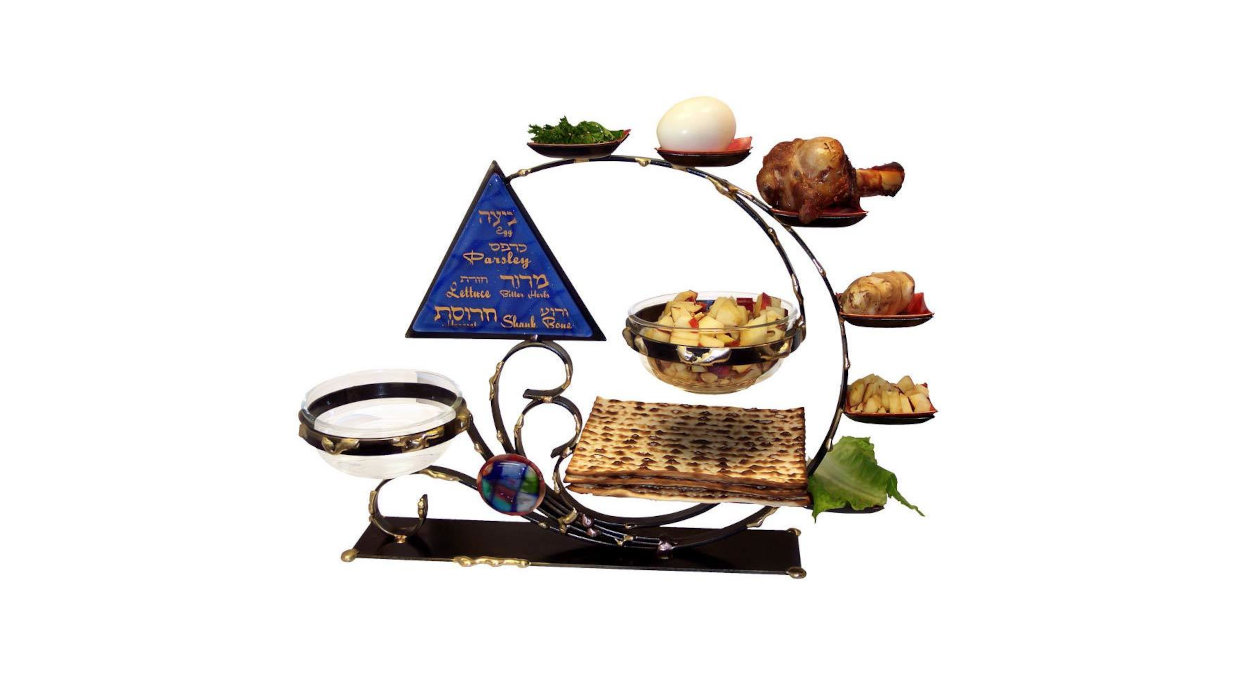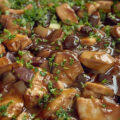Image Source: The Gary Rosenthal Collection
In Jewish mystical thinking, the entire Universe was designed from a template of energy structures known as the Ten Sefirot (Spheres). These structures are both the blueprint of reality as we understand it and the ultimate roots of our abilities, proclivities, and emotions. They are the forms on which the First and Second Temples were built, the inspiration for much of Jewish prayer, and, importantly, the basis for many of the mitzvot.
These ten spheres are generally divided into groupings of an upper three and a lower seven. This pattern is found throughout Judaism. For instance, when the Ten Plagues are visited upon Egypt, seven occur in one Torah portion, followed by an additional and more intense three in the next. In a reversed example, in the Jewish calendar, we observe a spiritually inauspicious period of time known as The Three Weeks, which is directly followed by The Seven Weeks of Consolation. When the mitzvah of Tefillin is performed, one wraps seven times around the lower arm plus an additional three on the fingers.
Therefore, it’s no coincidence that we have such an arrangement at the Passover Seder. The seder plate contains six items—a shank bone, a hardboiled egg, bitter herbs, charoset, and two more vegetables. The plate itself is considered the 7th item, as the function of the sphere that it represents (Malchut) is to collate and gather all that came before it into a single unit. That equals the lower seven. The three matzot on the table represent the remaining (upper) three.
The 15 stages of the Seder are meant to be transformative. Ideally, when it ends, we should walk away as different, better, and freer people. As such, each of the foods on the table, the ones that we eat and the ones we don’t, are there to fire our imaginations and spur us on to previously unknown levels of growth. Indeed, the name Pesach itself means to leap over, as on this night, we have the potential to jump levels in a way that’s not possible on other days.

Each of the foods arrayed before us corresponds to one of the aforementioned Spheres as follows:
Matzah
The matzah corresponds to the three highest sefirot—Keter, Chochma, and Binah. These are called the intellectual sefirot and are the “parents” to all the remaining ones. As humanity (at least in a physical sense) is nothing more than dust and water, the matzot are us—in a humble and simple form. The only real difference between them and, say, a baguette is the amount of hot air it contains. From this vantage point, the matzah represents humility, the key ingredient in all personal growth and the king of all character traits. When the lights of the top sefirot are healthy and thriving (and not mired in arrogance and confusion), the others will flow much more easily.
Shank Bone
There’s a verse in Exodus that says that God took the Israelites out of Egypt “with a mighty hand and an outstretched arm.” The shank bone represents “Chesed” or lovingkindness. It is the outstretched hand hoping to make a difference and is the paradigm for all kind deeds. When this sphere is healthy and aligned, we give freely and naturally without any taint of judgment or self-service.
Hard-boiled Egg
The egg corresponds to “Gevurah,” or discipline, and is the counterbalance to Chesed. It is likened to the Jewish People in that the more you heat it, the stronger it becomes. Sometimes, giving itself can be out of balance and needs to be tempered by withholding. As any parent knows, if we gave our kids whatever they wanted whenever they wanted it, they would end up with a very warped (and ultimately detrimental) perspective on life. Gevurah is the act of giving cloaked in one of withholding.
Bitter Herbs
The Maror on the plate corresponds to the sphere of “Tiferet,” which represents the balance between Chesed and Gevurah. Its unpleasant taste is a reminder of the harshness of slavery in all of its forms. At the same time, it is there to generate empathy. Those who have suffered themselves are advantageously positioned to understand and relate to others in the same circumstance. Perhaps this is why Jews have always been so willing to join movements that alleviate hardship in our world. Our own bitter experiences are the catalyst to do more good.
Charoset
This (generally yummy) paste represents the mortar that held together the bricks that the Israelites were forced to make for the Pharaoh. It corresponds to the sphere called “Netzach,” which means eternality or victory. Again, the verse tells us that “The more they were oppressed, the more they multiplied,” and though the mortar is another symbol of oppression, there is a certain pleasure that comes from outlasting evil. Victory is sweet.
Karpas (vegetable)
Popular favorites for Karpas include potato and parsley. These vegetables are said to represent the newly minted Jewish Nation in the springtime of their youth—freshly sprouted out of the harsh ground of Egypt. They are also simple and low-growing. As such, they represent the sphere of “Hod” (humility), which acts as a counterbalance to the strong and proud connotations of Netzach. When the humility of matzah has been firmly internalized, we have the ability to be concurrently very strong and very humble—the ideal combination.
Chazeret
This remaining vegetable on our plate (often Romaine lettuce) is mixed into the “Hillel Sandwich” right before the official dinner portion of the Seder begins. It corresponds to the sphere called “Yesod” (Foundation or bonding) and is the last step in this journey of spiritual and emotional growth. As we’ve seen, the Seder combines positive and negative symbols. On the road to true freedom, we are bound to encounter both. Good times and bad times, light and dark, pleasure and pain. Before we partake of the joyous meal—the celebration of our collective arrival, we acknowledge that it has all been for the good. We stuff all of the symbols, bitter and sweet, all together and savor them as one.
The Jewish People have endured a lot in our long journey, and this year feels like a particularly intense reminder of that. Our story has had many pitfalls and bumps on the road. Through our challenges, we have developed many brilliant tools for navigating and processing what is occurring in the most spiritually productive manner. The seder is the example par excellence, and those who take the time to understand it and mine it for its generational wisdom will reap the manifold benefits of true freedom.

















